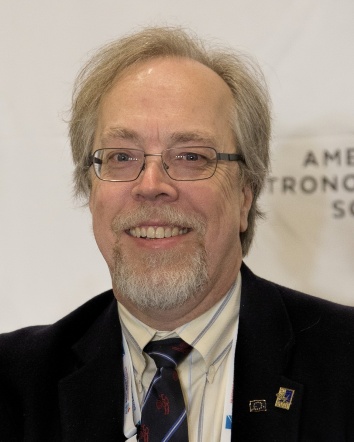
B-G Andersson
14 August 2024
McDonald Observatory is pleased to announce the appointment of B-G Andersson as its new assistant director for research support. As a part of the Observatory’s management team, the assistant director oversees the allocation of observing time on the telescopes and supports the researchers and programs that qualify for it.
“We have conducted a competitive search for the right person,” said Taft Armandroff, director of McDonald Observatory. “B-G has very strong experience in observatory operations and management that has prepared him well. We are delighted to have him on our team.”
Prior to joining McDonald Observatory, Andersson served for many years as associate director for science operations at NASA’s Stratospheric Observatory for Infrared Astronomy (SOFIA). Before that, he worked on Johns Hopkins University’s Far Ultraviolet Spectroscopic Explorer (FUSE) mission and at NASA’s Jet Propulsion Laboratory.
In addition to having considerable experience in observatory operations, Andersson has conducted extensive research on the interstellar medium (ISM). That’s the gas, dust, and energy that exists between objects in space. This expertise dovetails nicely with the Observatory’s capabilities – many of its instruments are particularly well suited to detecting the subtle material using spectroscopy. With spectroscopy, astronomers learn about the physical properties of objects and their surroundings by studying the light they emit. “What McDonald means to me, as an ISM astronomer,” said Andersson, “is unique, high-resolution spectroscopy capability and other really fantastic instruments.”
Over the course of his career, Andersson has observed at over 30 ground-based observatories, including McDonald. In the late 1990s and early 2000s he used the 82-inch Otto Struve Telescope to study dust in the interstellar medium. His Ph.D. thesis on molecular clouds even used data from the Observatory. He obtained his doctorate in theoretical physics from the University of Gothenburg, Sweden, in 1992.
As assistant director for research support, Andersson will help define the questions examined at the Observatory and equipment used to do so. This, in turn, reinforces the site’s position within the astronomy community. “While modern astronomy is increasingly focused on large, multi-national observatories, university-based observatories have important roles to fill. Identifying the right mix of instruments and programs is essential.” Andersson said. “How to select innovative and/or large programs and balance these with the ‘bread-and-butter’ programs of the user community is a crucial question to ensure the scientific and financial strength of any observatory.”
Andersson replaces the outgoing assistant director for research support, Anita Cochran, who recently retired from the position. To learn more about him and his work, visit his professional website.

B-G Andersson